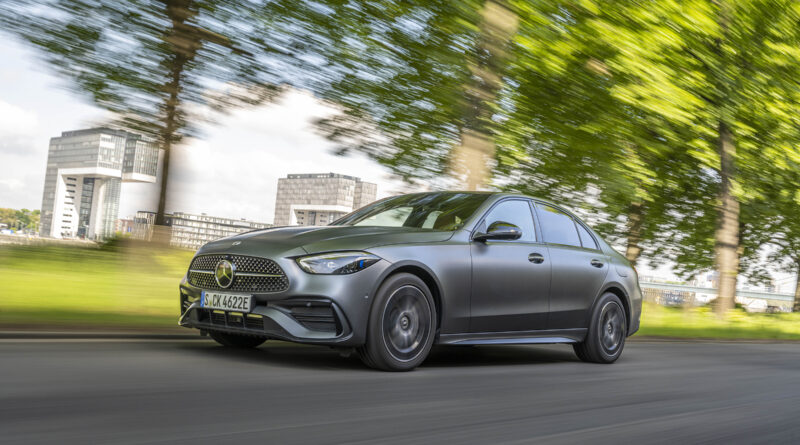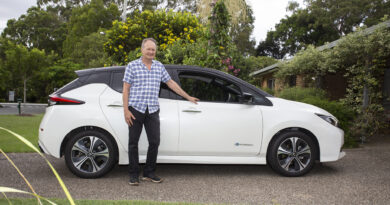2022 Mercedes-Benz C 350 e PHEV first drive review
A second long-range Mercedes-Benz PHEV will arrive in Australia in 2022. That’s when the C 350 e plug-in hybrid is scheduled to launch. Known as the C 300 e overseas, the same car will be badged as the C 350 e in Australia.
It will have a WLTP-rated electric-only range of 89 to 110km, according to an engineer from the team that developed the PHEV’s powertrain.
That range is similar to the latest S-Class PHEV, which is just about to go on sale in Europe and is also Australia-bound. The C-Class PHEV uses the same basic battery and motor tech as its big sister.
READ MORE: Mercedes-Benz C-Class PHEV family to grow beyond C300e
READ MORE: Driven! Mercedes-Benz S580e S-Class PHEV
READ MORE: Mercedes-Benz S580e PHEV tops 100km EV range, AMG eyes 600kW PHEV
And this means the new C 350 e outguns the current C 300 e in big ways; 95kW motor instead of 60kW, and 25.4kWh battery pack instead of just 6.2kWh. The new car’s electric-only top speed is higher and its foot-to-the-floor acceleration is swifter.
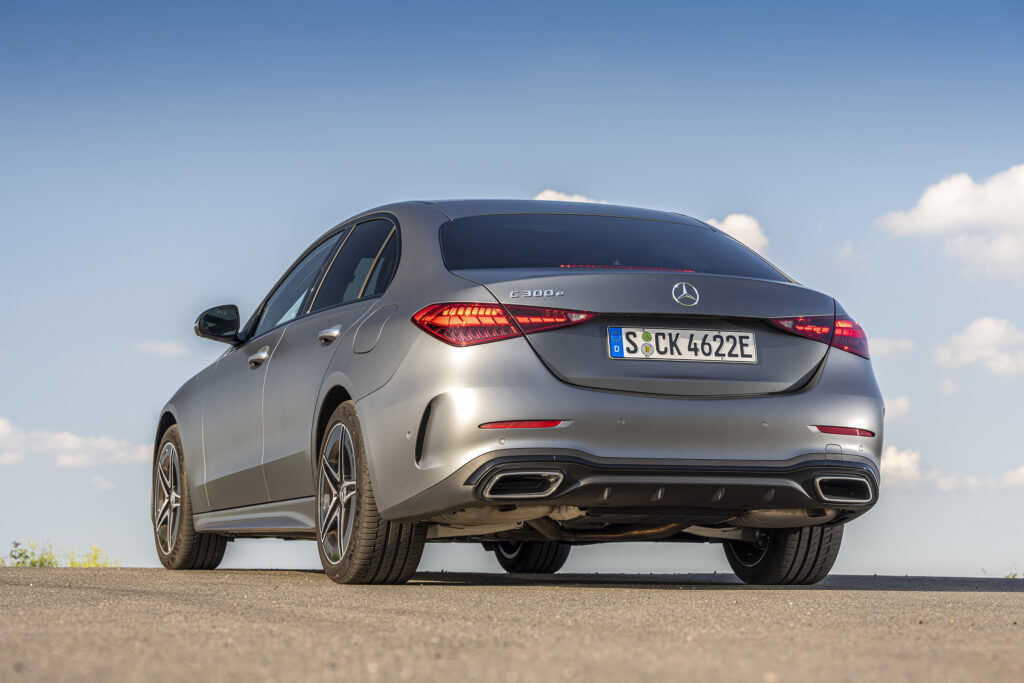
Powertrain details
With 96 cells, the C-Class PHEV’s battery pack is close to the size of the 104-cell pack in the S-Class PHEV, and both use Mercedes-Benz’s latest, fourth-generation, in-house developed lithium ion pouch cells.
The two models share the same electric motor, but the slightly lower voltage of the smaller battery pack of the C 350 e reduces maximum output from the 110kW of the bigger S 580 e.
That motor is situated between the C 350 e’s turbo 2.0-litre four-cylinder engine and its automatic transmission. A clutch between engine and motor means the ICE can be shut down and decoupled, permitting the electric motor alone to propel the car, via its nine-speed auto.
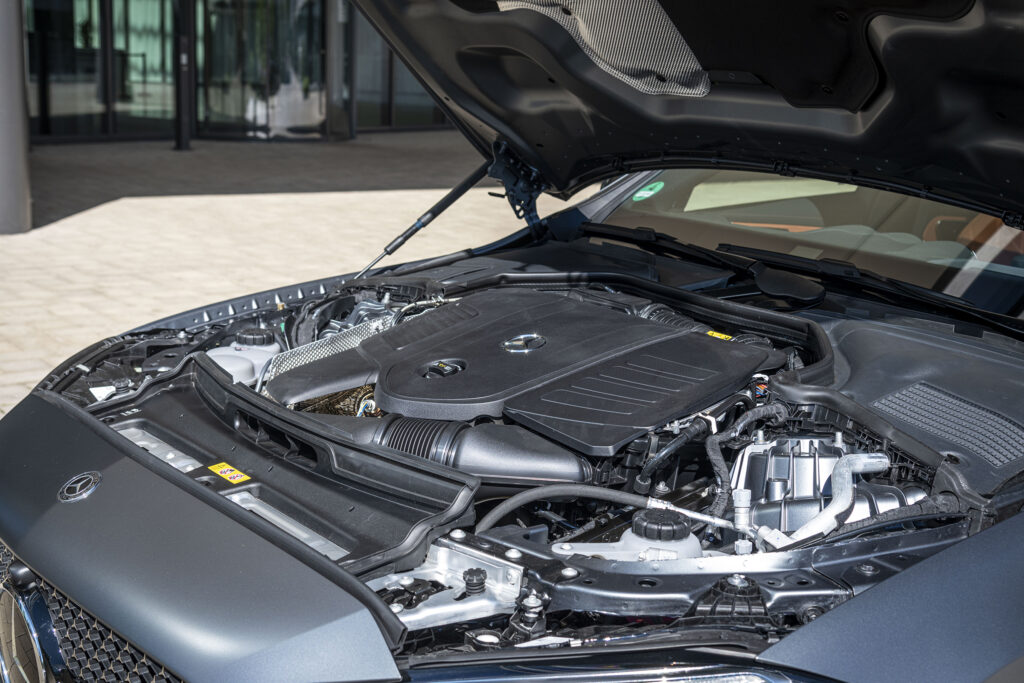
Maximum power from the ICE is 150kW, but the maximum system output isn’t this number plus the 95kW of the electric motor. This is because the ICE and the motor produce their maximums at different points in the rev range. The actual system maximum is 230kW. The same is true for torque. The ICE maxes at 320Nm, the motor at 440Nm, but the system maximum is 550Nm.
Both for power and torque, the C 350 e easily outguns the mild-hybrid C 300 and C 200, which will be the first members of the new C-Class family to go on sale in Australia. They’re due to arrive in the fourth quarter of this year.
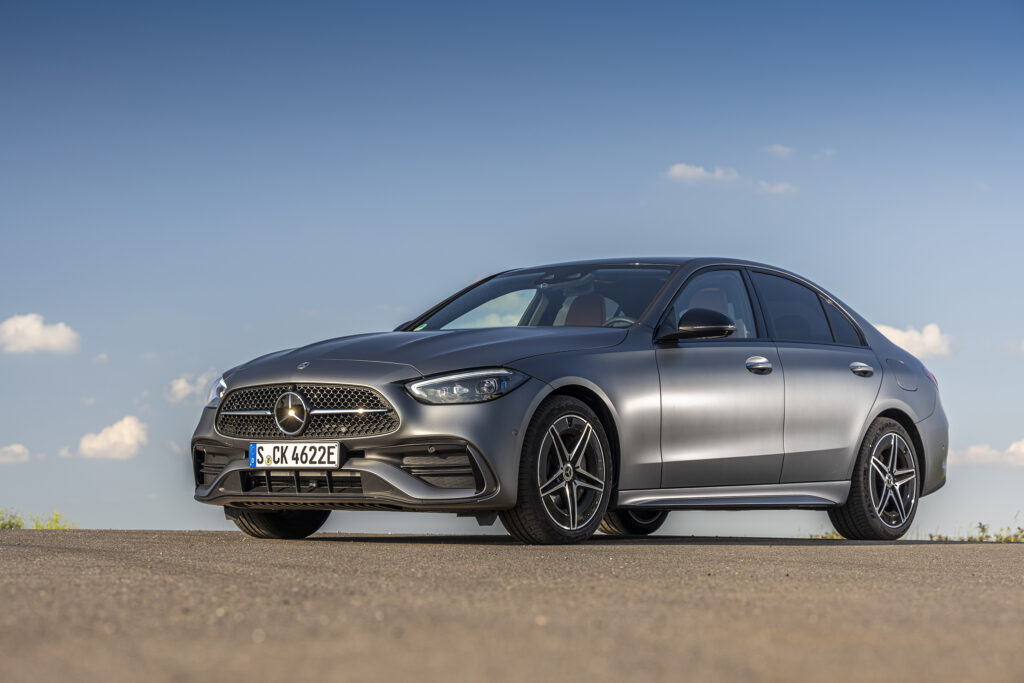
In fact, the electric motor of the C 350 e alone produces so much torque that it starts off in second gear when in E mode.
While the battery pack of the new C-Class PHEV does eat into boot space a little, unlike the current C 300 e the cargo compartment has a flat floor. However, the size of the battery pack means the optional rear-wheel steering system offered in other new C-Class variants isn’t available in the C 350 e.
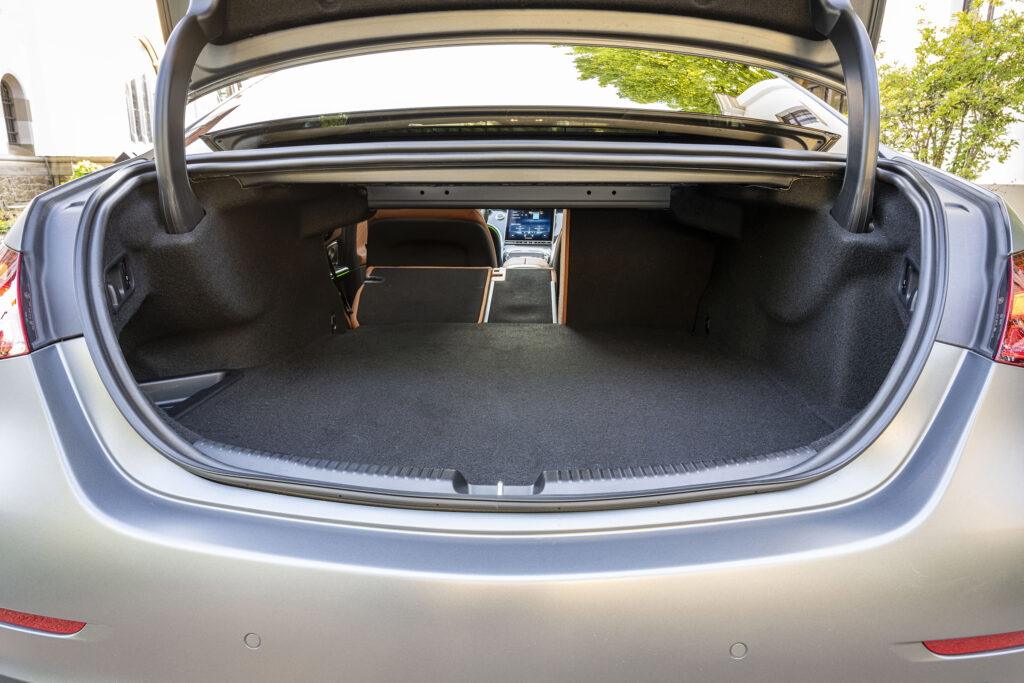
Charging
The C 350 e comes standard with an on-board 11kW AC charger. An appropriate three-phase wallbox can recharge the car’s battery pack in a little over two hours.
The optional 55kW DC charger offered in Europe cuts the recharge time for a fully discharged battery to around 30 minutes.

Driving
Slightly longer and wider than the model it replaces, the C-Class is roomier inside. There’s ample space for large adults in the rear seat.
While the exterior of the car is generic Mercedes-Benz sedan, which isn’t a bad thing, it’s the interior that delivers the real new-model wow factor. It’s very much like the S-Class luxury limo inside the new C-Class.
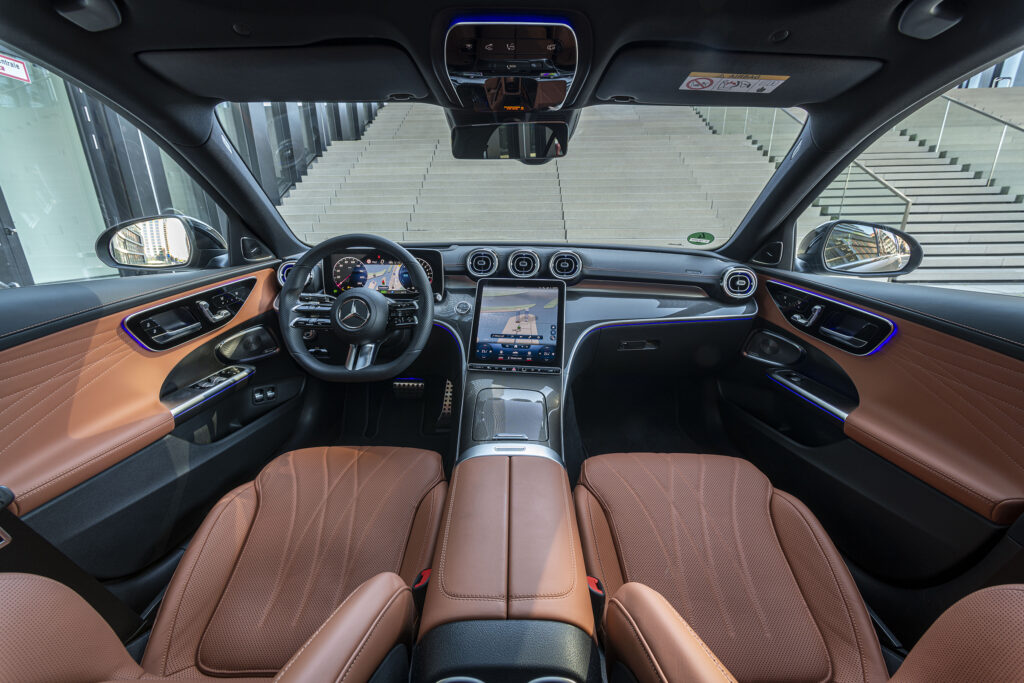
Centrepiece of the beautifully detailed instrument panel is the large, portrait-oriented centre screen. In the C-Class it’s angled slightly towards the driver, which is a change for Mercedes-Benz.
The MBUX infotainment system is the latest generation, and the C-Class features an extensive standard equipment list that includes a host of advanced driver-assistance and safety technology.
The C 350 e’s default driving mode is E for electric, if there’s sufficient charge in the battery pack. If there’s not, the car chooses instead to run in Hybrid mode, which replaces the Comfort mode found in the non-PHEV models.
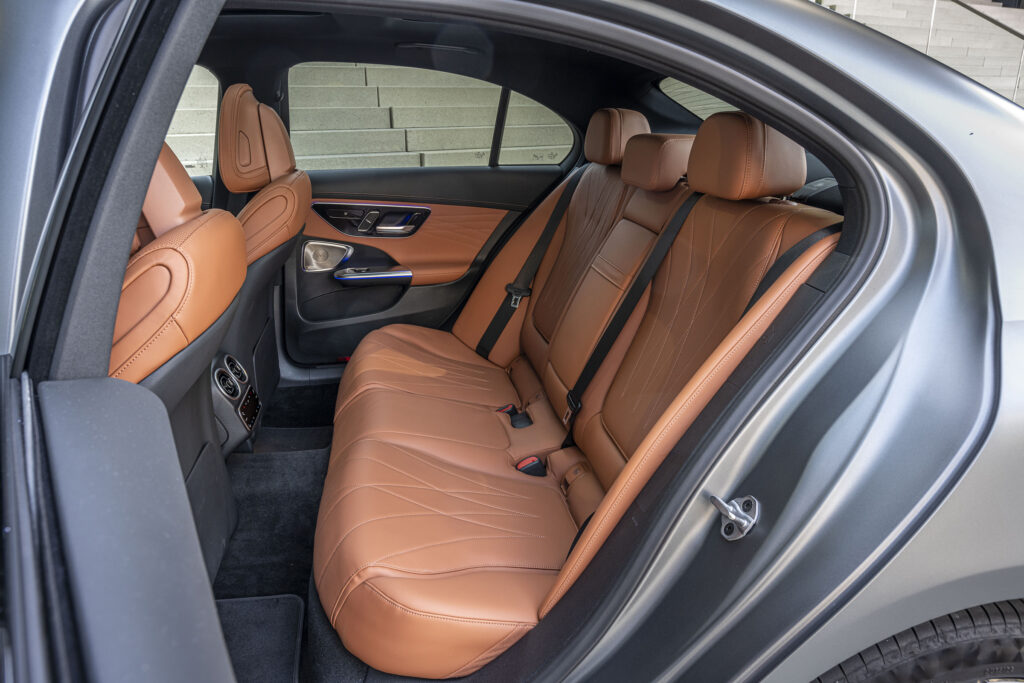
In E mode, resistance from the haptic accelerator pedal clearly signals the point beyond which further pressure will cause the ICE to fire up. This isn’t likely to happen often.
The performance of the C 350 e in E mode is more than adequate for most driving situations. During our test drive on roads near Mercedes-Benz’s Immendingen proving ground in south-west Germany, there was enough power in E mode to pull a snappy overtake on a slow-moving truck.
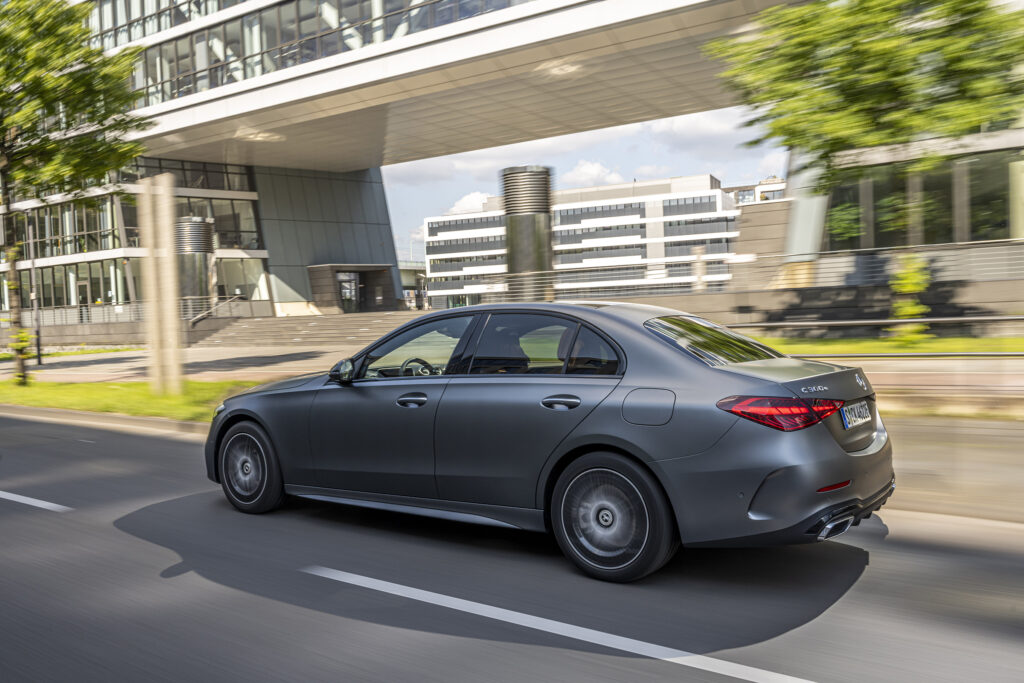
Silence and smoothness make E easily the most pleasant of the C 350 e’s driving modes. It’s almost impossible to detect gearshifts; the transmission calibration is truly excellent.
In all driving modes except Sport, which means the ICE runs 100 percent of the time, the car’s paddle shifters can be used to toggle through the various levels of regenerative braking. These vary from none at all to reasonably strong. With maximum regen selected, the C-Class PHEV will slow at a maximum rate of 0.2G from speeds around 70km/h.

In Hybrid mode the stopping and starting of the four-cylinder engine subtracts from the car’s E mode serenity. While it’s smooth enough, the engine’s sound isn’t exactly music to the ears.
While Sport mode does make the C 350 e a more eager performer, it’s not a great match with the car’s calm overall character. It kills any illusion of being at the wheel of a Mini Me S-Class.
With extra weight over its rear wheels – that battery pack, remember – the C 350 e gets much closer to ideal 50:50 weight distribution than other members of the C-Class family. Both ride and handling benefit, in all modes. The PHEV is a definitely a better drive than the less costly mild hybrid models.
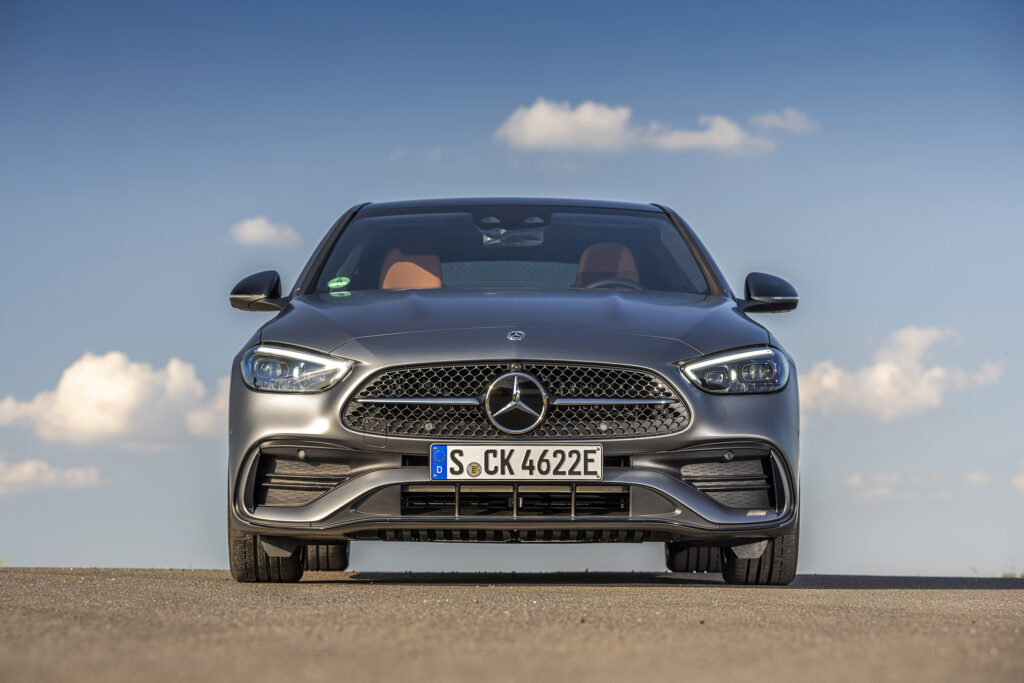
Pricing?
As it’s still eight months or so from going on sale in Australia what the C 350 e will cost is not yet decided. It’s believed Mercedes-Benz Australia will slightly raise C-Class prices across the board, in line with richer levels of standard equipment.
It’s possible the increase could be slightly greater for the C 350 e than the C 200 and C 300, reflecting the extra cost of its much bigger battery pack compared to the outgoing C-Class PHEV. In this is the case, the C 350 e could edge close to $90,000.

